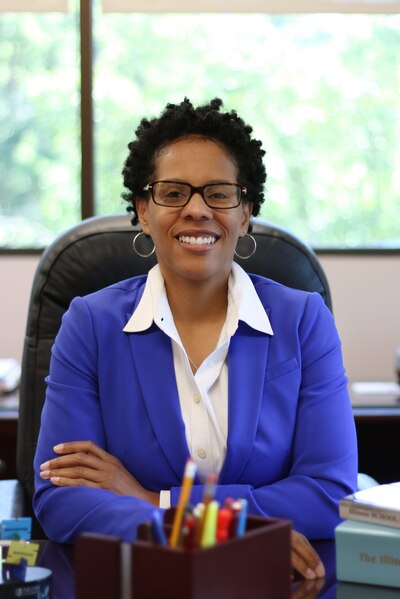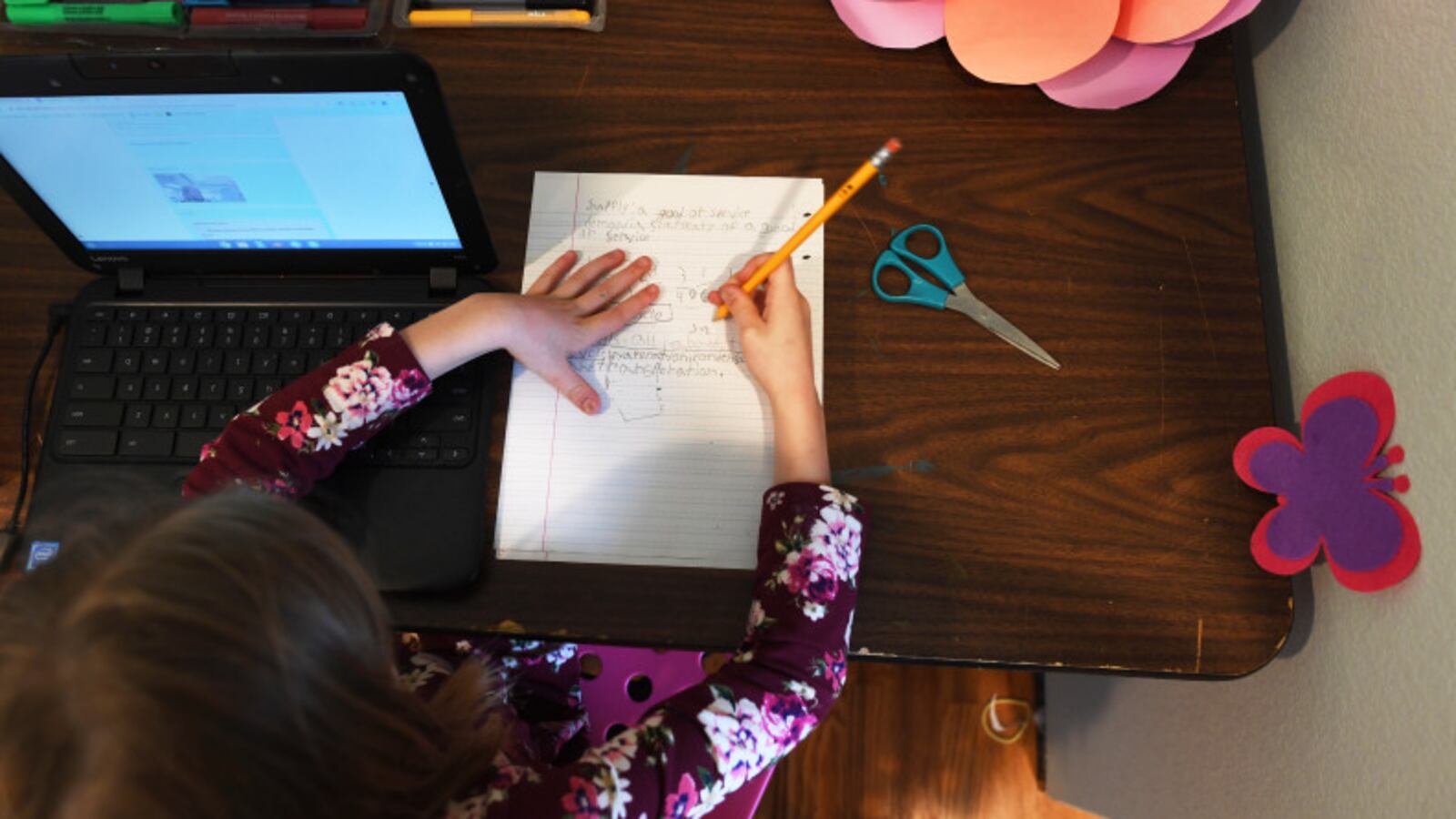As measures to control the spread of the coronavirus closed schools and moved learning online, superintendents throughout the state like Teresa Lance have had to create solutions for their districts under pressure and quickly.
Lance has led Thornton Fractional 215, a predominately black and low-income high school district near the Indiana border, for two years. She has been an educator for 27 years, beginning as a middle school health educator in Baltimore City Public Schools.
When Gov. J.B. Pritzker on March 13 ordered schools to close by March 17, districts had scant time to turn around a plan.
Lance feels thankful to the district staff, “Our staff is really just phenomenal, recognizing that we would have to move really fast to turn this around — and they did.”
Chalkbeat spoke with Lance by phone about what she has learned as a school leader in a difficult time. This interview has been condensed and lightly edited.

Has anything in your career prepared you for a situation like this?
No. Sometimes you have to innovate and really quickly. You hear of folks who are really innovative and creative, but what you don’t hear is folks having to turn that around in such a quick amount of time. I’ll be honest, I’ve never had to do anything so fast in my entire career.
What kinds of support should teachers expect from district leaders while school buildings are shuttered?
Teachers should expect and receive the same level of support that we would want them to extend to our students. For example, remote online learning is new to many of us. From the research, we know that online learning typically takes twice as long as if we were sitting in a traditional brick-and-mortar setting. So we need to be patient with our teachers as they try to get this right, just like we would expect our teachers to be patient with students as they try to get this right. I also think that we need to be flexible. We’re all learning something new. It was important that we provided some professional development up front for teachers, so that they had time to play around with a new video conferencing that we’re rolling out.
We have actually removed those social relationships and connections that students have with each other in the building. So we need to recognize and provide support for teachers for how they can reach out and continue to connect with their students.
Do you expect there to be significant lags in student learning, and what will you do to address them once school is back in session?
I will not be the superintendent here in this district next year. What I’m trying to do is make sure that we’ve built up enough systems in the event that we are back in schools that we have a transition plan in place for our students.
What I think superintendents need to do is really think about what is needed to reinvigorate students about returning to brick and mortar. I think we’ve got to generate some excitement, and it’s not like kickoff. Once students return, before we go straight into teaching and learning, we are really cognizant of their emotional needs. We’ll have some students who will have some anxiety since they’ve been out of school for more than 45 days. We have to make sure that we’ve got social social workers or support services in place to help those students transition back.
We have to pre-assess our students. We need to get a snapshot of what they know and then we personalize learning based on what information we’ve gathered.
What worries you the most?
I think about the students and the level of stress that they need to bear. Whether you are a ninth grader and you were just wrestling with what high school is, or a senior — their graduation and prom are not happening. So I think about that and think about them.
I think, “are they OK?” because I can’t lay eyes on them. Are they struggling with their work and if they’re struggling is there anyone there, whether virtually or at home, that can lend support to them? Are they doing OK with not having the level of social interactions that they used to have? Those are all the things that worry me and cause me to lose some sleep at night.
What gives you hope in this moment?
On the flip side it’s the kids. You hear these buzzwords about teaching our kids grit or teaching our kids to be resilient. I don’t buy that. I think that students are already resilient. They’ve shown us resiliency time and time again.
What gives me hope is really that our students are going to rewrite the history books. They will transform what teaching and learning look like for their children and grandchildren just because of what they are experiencing.
And then more important, I think that they will dismantle some of the inequities based on their present day experiences. That gives me hope, they give me hope.


